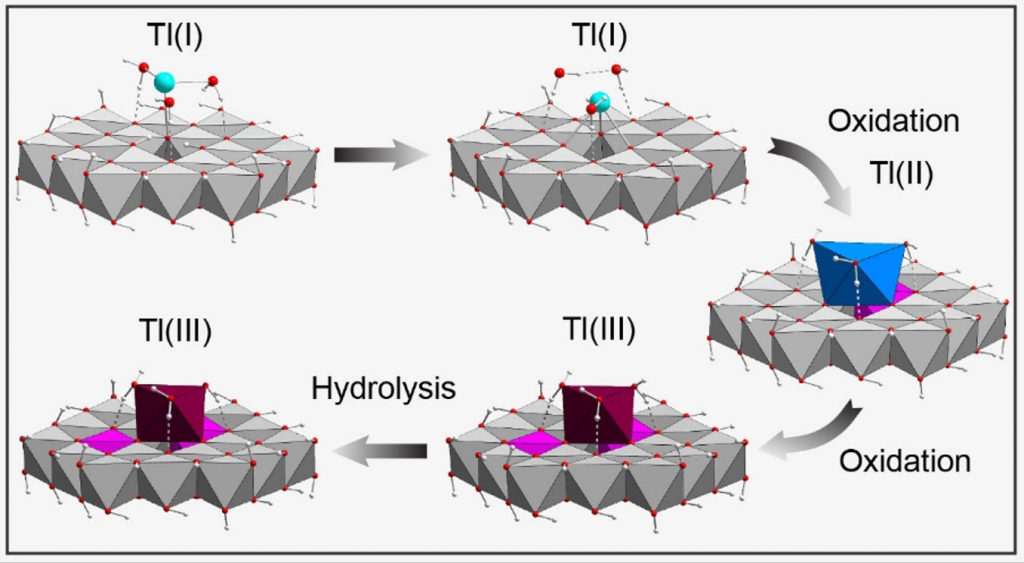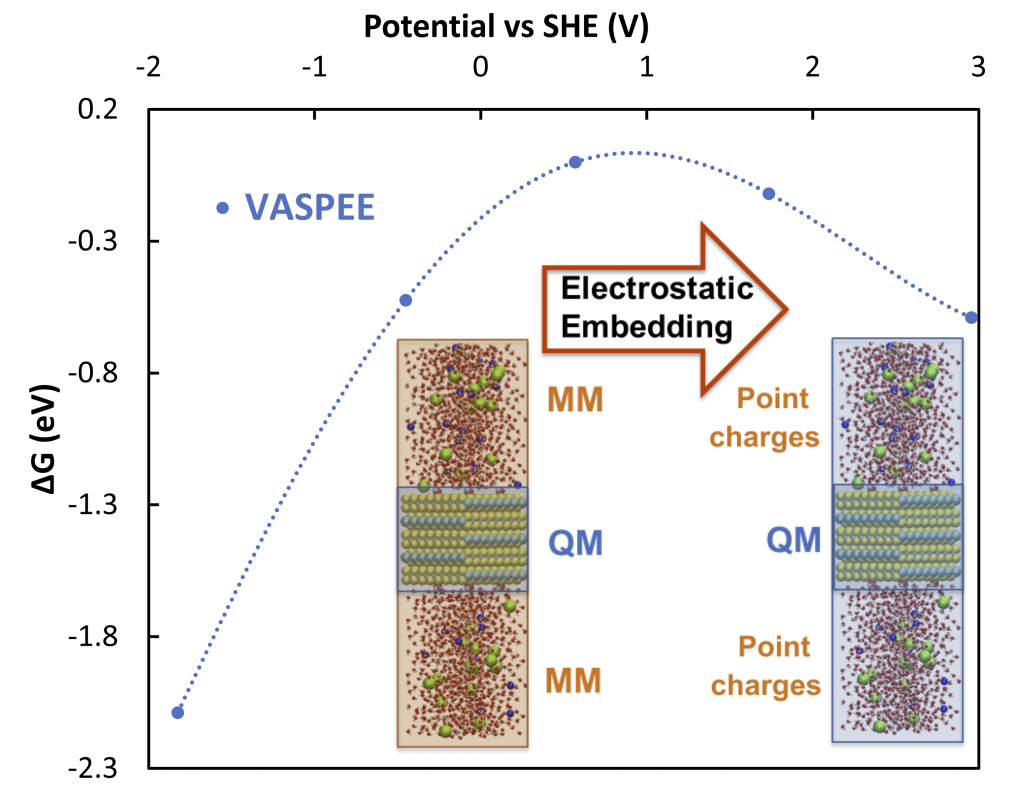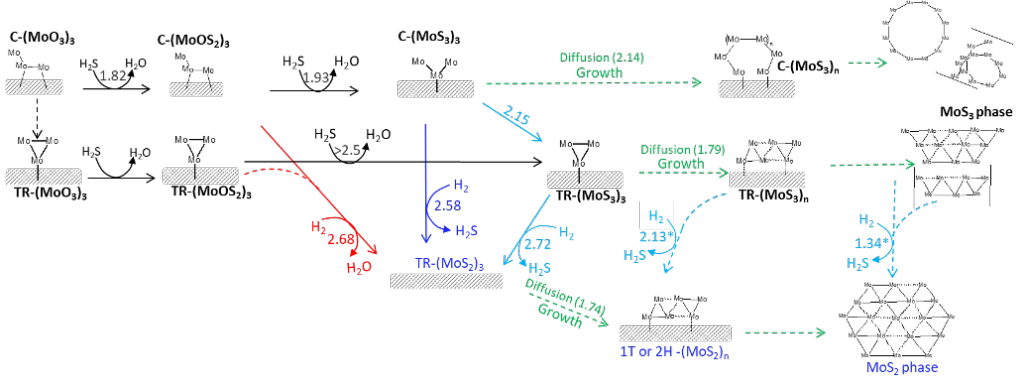Once again, the collaboration with Alain Manceau has been very fruitful. In our most recent publication in ACS Earth Space Chem., we have explored the mechanism of thallium oxidation over birnessite models via DFT.

Once again, the collaboration with Alain Manceau has been very fruitful. In our most recent publication in ACS Earth Space Chem., we have explored the mechanism of thallium oxidation over birnessite models via DFT.


After quite some time of conceiving the work, implementing it and writing up the story, we are finally there: The implementation of electrostatic embedding in VASP is published in ACS Applied Interfaces and available on gitlab.
Due to the hard and extensive work of Akif, we have finally managed to gain more insight into the surface state of metallic ruthenium in contact with water, have a look at the corresponding publication in J. Phys. Chem. Letters.
It is with great pleasure that I can finally announce the publication of our work on doping of MoS2 in order to activate the basal plane for the hydrogen evolution reaction, HER. You can read all about this story in Electrochimica Acta. Great work, Nawras!
If you are more interested in the precise HER mechanism on sulfur vacancies of MoS2, please have a look at our paper that just appeared in the International Journal of Hydrogen Energy. If we would have known that finding transition states for electrochemical steps is so timeconsuming, we might not have had the courage to start this work! – Thank you, Nawras, for going through with it!
We finally did it: The generalized coordination number dependent metal/water force field, GAL21, that has been developed over several years by Paul Clabaut, is finally published in J. Chem. Phys. and is available for use in CP2K!
Our collaboration with Carine Clavaguéra has led to a first publication in Phys. Chem. Chem. Phys. If you are interested in the interaction energy and the energy decomposition analysis of aromatic molecules on a small (32 atoms) gold nanoparticle, just check it out!
Together with Carine Michel we have published our Viewpoint in ACS Catalysis on how to gain atomistic insights into the solid/water interfaces, going from implicit solvent models to fully explicit interfacial simulations, passing by hybrid microsolvation approaches.
This comes just a couple of months after we finally published our extensive work on adsorption of ethanol at the alumina/water interface. Identifying the most stable adsorption mode has been much more challenging than we expected. Nevertheless, combining QM/MM, ab initio MD-based thermodynamic integration and meta dynamic simulations allowed us to identify the dissociated form as the most stable one.
It is my great pleasure to announce the publication of the grand-canonical framework applied to the random phase approximation. Ziyang Wei from the group of Philippe Sautet did a terrific job in putting everything together and demonstrating the usefulness of this approach. Just check-out the manuscript in J. Phys. Chem. Letters.
Congratulations to Nawras Abidi who won the best poster prize at the ISE Topical Meeting in Aachen. Well done and well deserved!
After a very long reviewing process (with in the end only minor changes), I am very pleased to announce that the second article of Amit Sahu is finally published! If you are interested in the genesis of alumina supported MoS2 catalysts, check out the extensive computational work!
